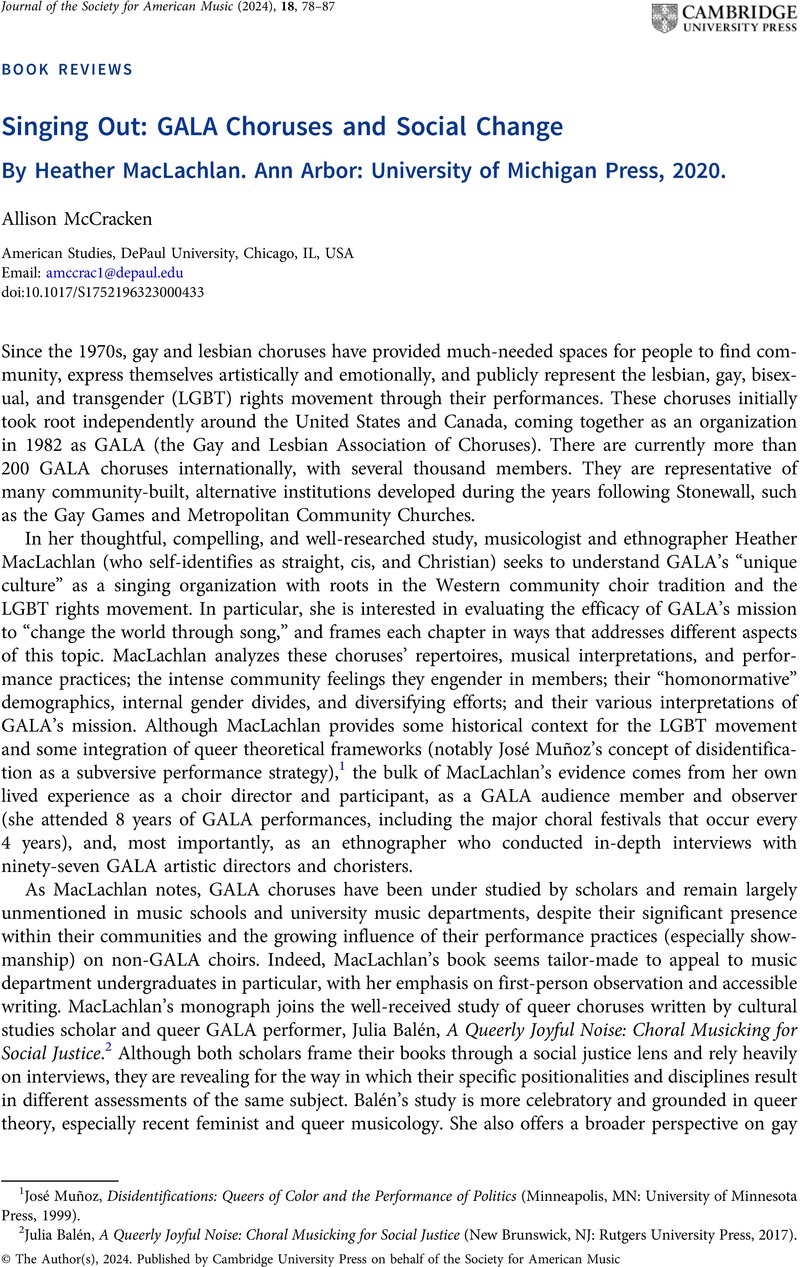No CrossRef data available.
Published online by Cambridge University Press: 26 February 2024

1 Muñoz, José, Disidentifications: Queers of Color and the Performance of Politics (Minneapolis, MN: University of Minnesota Press, 1999)Google Scholar.
2 Balén, Julia, A Queerly Joyful Noise: Choral Musicking for Social Justice (New Brunswick, NJ: Rutgers University Press, 2017)CrossRefGoogle Scholar.